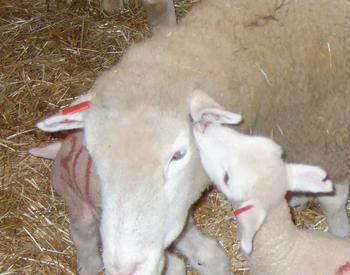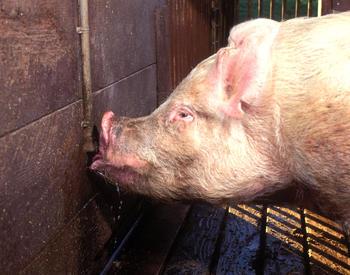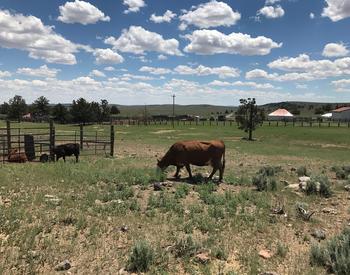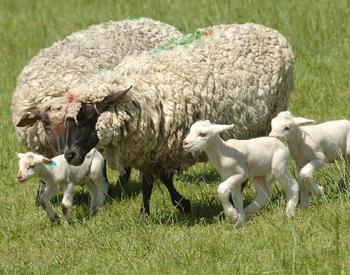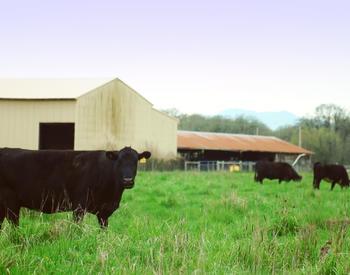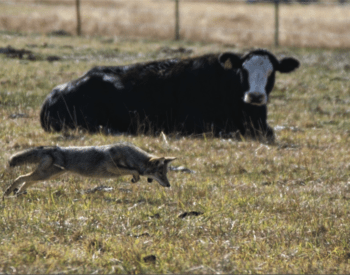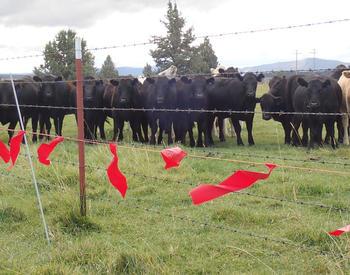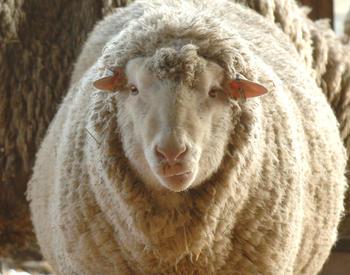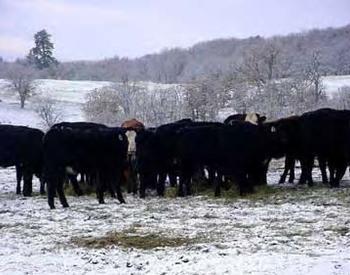Situation and outlook
Some years the market for feeder and slaughter lamb prices isn't very strong. Detailed information can be found in market reports. Follow prices on these websites:
By looking at the seasonal price index on feeders and slaughter lambs you can follow past trends in prices. However, there is no indication that these trends will hold true or that there will be any improvement in prices in the immediate future.
Things to consider
The following information is not a list of recommendations for what you should do, but rather it is a summary of things that you should consider before you make decisions. Please contact your Oregon State University Extension agent for more details and discussions.
Options for lamb producers
- Sell lambs now (fats and/or feeders).
- Retain feeders (send to a custom lot or feed at home).
Feedlot and harvesting facilities
The American Sheep Industry Association (ASIA) maintains lists of lamb feeders and U.S. packers/breakers/wholesalers. For more detailed information, see attachments or log on to the ASIA website.
Gain
If feeder lambs are not sold now and held for sale in the future, there are two strategies for feeding.
One would be to aim for a moderate gain of approximately one-quarter pound a day until market conditions improve and then sell lambs as heavy feeders. If lambs are held into the fall, pasture conditions may allow grazing of forage regrowth and weight gains should improve.
The alternative would be to feed a finishing ration for an accelerated rate of gain (.6 to .75 pounds per day) and then sell them as slaughter lambs. Feed conversion (feed: gain) would be low with the moderate gain, but should be approximately 6 or 7:1 for a high-concentrate finishing ration.
Nutrition
Unless you have irrigation, the pasture forage quality will decline drastically as we move into the summer. As the pastures mature, lamb weight gains decrease. Additional feed will be necessary to meet the nutrient requirements for the desired gain.
A roughage source (hay or stockpiled pasture) and concentrates (protein and energy from grains and meals) will need to be blended in proper proportion to meet nutrient requirements for weight gain and maintenance.
Make sure your lambs are consuming adequate amounts of a balanced mineral supplement. Don't forget to provide ample feed bunk space and plenty of fresh water. Make any feed changes gradually.
Feed costs
(Rough examples only. Feed costs could be significantly lower depending on your costs.)
Moderate gain
For example, take a 70-lb feeder lamb, gaining .25 lb/day for 120 days. Total weight gain would be 30 lb (100 lb lamb). If a daily ration of 2 lb of $100/ton hay and 1 lb of $160/ton concentrate (corn & soybean meal) was fed, then the ration would cost $0.057 per pound. Cost of gain would be $0.720/lb ($0.06/lb x 3 lb/day x 120 days /30 lb gain)
- Advantage: can sell as feeders when opportunity opens up.
- Disadvantage: cost of gain is high (poor feed conversion).
Accelerated gain
For example, take a 79-lb feeder lamb, gaining .75 lb/day for 60 days. Total weight gain would be 45 lb (115 lb lamb). If the daily ration of .5 lb of $100/ton hay and 2.5 lb of $140/ton concentrate (corn) was fed, then the ration would cost $0.066/lb. Cost of gain would be $0.264/lb ($0.066/lb x 3 lb/day x 60 days /45 lb gain).
- Advantage: cost of gain is low (good feed conversion).
- Disadvantage: have to sell as slaughter lambs at a set time.
Make an estimate of what lambs will be selling for if the market stays the same or goes down. Do you expect to break even, profit or lose money on the lamb weight gain?
For your financial assessment, don't forget to factor in labor costs, opportunity cost on investment, risk and interest on loans.
Shearing
Shearing lambs may decrease stress from summer heat and improve weight gains. The pelt market fluctuates, so keep an eye on how close to marketing you shear the lambs. You will need a good 40 days of wool regrowth to provide a good pelt.
Animal health
Work closely with your ranch veterinarian. Stress on retained lambs will increase as forage quality changes. Unless supplemented, lambs will go from high rates of gain to slow rates, or a standstill and even weight loss. Consider the following preventive measures:
- Additional deworming. Depending on current infection rate, keeping lambs may increase the risk of parasitism.
- Vaccinations: Consider giving additional Clostridial booster sometime midsummer.
- Improve immune function: Make sure your selenium levels are adequate for the lambs. Make sure the lambs are not copper deficient. Use caution since sheep have a low tolerance to copper.
- Use excellent management and predator control for low death losses (2–4% or less).
Acknowledgments
OSU Extension Service sheep specialist Jim Thompson (retired) and Extension veterinarian Don Hansen (retired) provided advice on lamb management and health for this publication.

